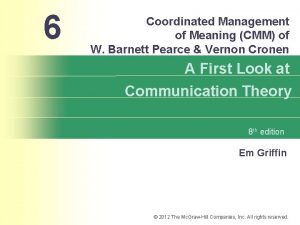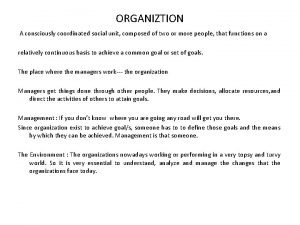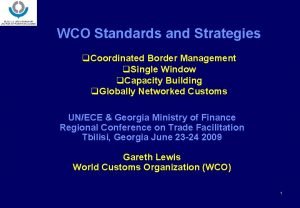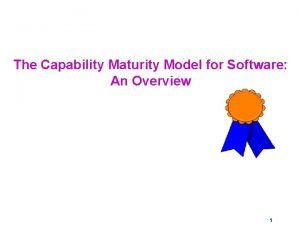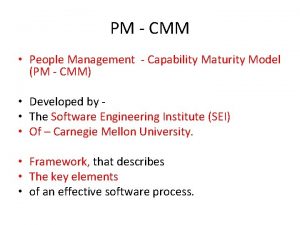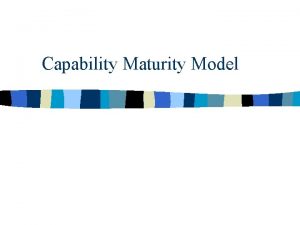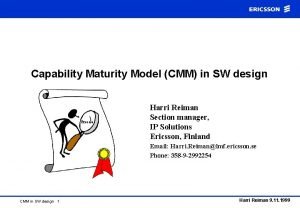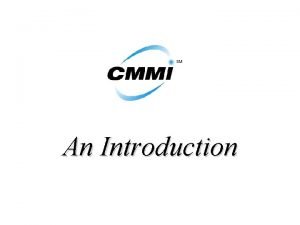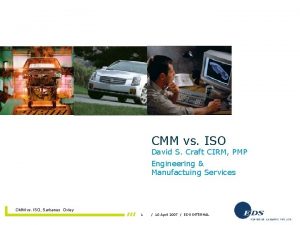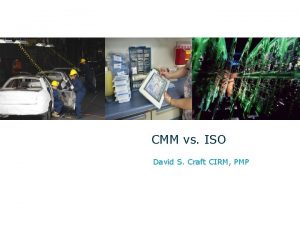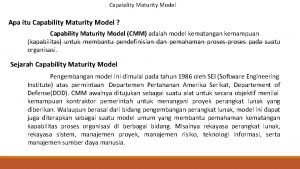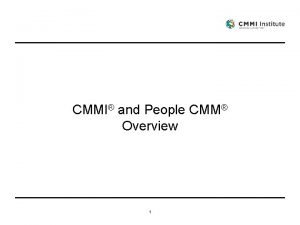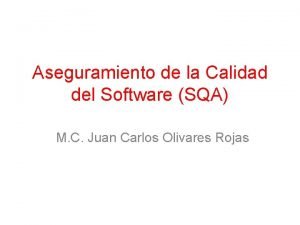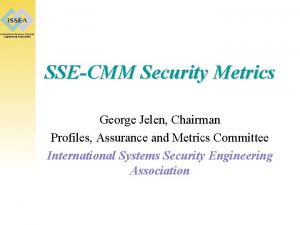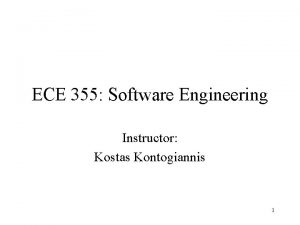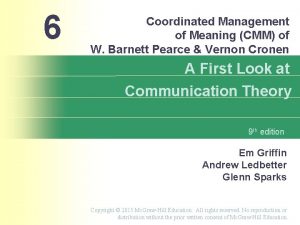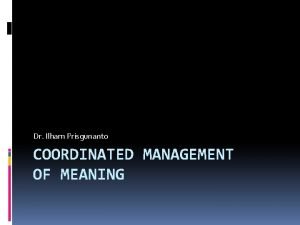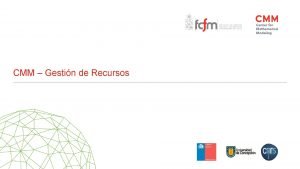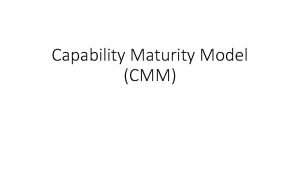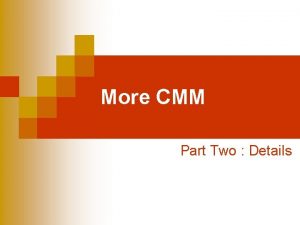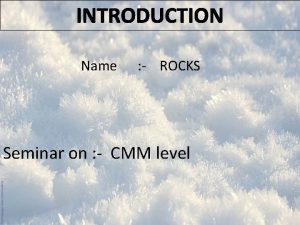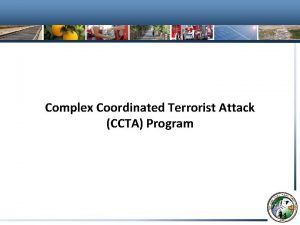6 Coordinated Management of Meaning CMM of W




















- Slides: 20

6 Coordinated Management of Meaning (CMM) of W. Barnett Pearce & Vernon Cronen A First Look at Communication Theory 8 th edition Em Griffin © 2012 The Mc. Graw-Hill Companies, Inc. All rights reserved.

Coordinated Management of Meaning (CMM) Slide 2 q Stories from the Field as a Practical Theory q CMM as an Interpretive Theory – Picturing Persons in Conversation q CMM as an Interpretive Theory: Stories Told and Stories Lived q Cosmopolitan Communication: Disagree, Yet Coordinate q Ethical Reflection: Martin Buber’s Dialogic Ethics q Critique: Three Theories, Three Appraisals © 2012 The Mc. Graw-Hill Companies, Inc. All rights reserved.

Coordinated Management of Meaning (CMM) Slide 3 q. Persons-in-conversation coconstruct their own social realities and are simultaneously shaped by the worlds they create n Every conversation has an afterlife © 2012 The Mc. Graw-Hill Companies, Inc. All rights reserved.

CMM in Action—Stories from the Field Slide 4 q. Pearce and Cronen believe practical communication theory should offer a variety of tools to help understand flawed patterns of interaction n Family Therapy • Strange loop – description of unwanted repetitive communication pattern © 2012 The Mc. Graw-Hill Companies, Inc. All rights reserved.

CMM in Action—Stories from the Field Slide 5 q. Mediation q. Cupertino Community Project n Dialogic communication – conversations in which people speak in a manner that makes others want to listen, and listen in a way that makes others want to speak © 2012 The Mc. Graw-Hill Companies, Inc. All rights reserved.

Slide 6 Figure 6 -1: A Strange Loop of Diagnosis and Behavior © 2012 The Mc. Graw-Hill Companies, Inc. All rights reserved.

CMM as an Interpretive Theory – Persons-in-Conversation Slide 7 q Social constructionists – Persons-inconversation co-construct their own social realities and are simultaneously shaped by the worlds they create 1. Experience of persons-inconversation is the primary social process of human life © 2012 The Mc. Graw-Hill Companies, Inc. All rights reserved.

Persons-in-Conversation: Creating Bonds of Union Slide 8 q Social constructionists (continued) 2. The way people communicate is often more important than what they say • Logical force – moral pressure or sense of obligation a person feels to respond in a given way to what someone else said or did © 2012 The Mc. Graw-Hill Companies, Inc. All rights reserved.

Persons-in-Conversation: Creating Bonds of Union Slide 9 q Social constructionists (continued) 3. Actions of persons-in-conversation are reflexively reproduced as the interaction continues • Reflexivity – process by which the effects of our words and actions on others bounce back and affect us 4. CMM researchers see themselves as curious participants in a pluralistic world © 2012 The Mc. Graw-Hill Companies, Inc. All rights reserved.

Stories Told and Stories Lived Slide 10 q. Stories lived – co-constructed actions that we perform with others q. Stories told – narratives used to make sense of stories lived © 2012 The Mc. Graw-Hill Companies, Inc. All rights reserved.

Stories Told and Stories Lived Slide 11 q. Managing Meaning through Stories Told n Storytelling, central act of communication • Hierarchy of meaning – rank-order of relative significance of contexts that encompass a story as aid to interpretation • Speech act – any verbal or nonverbal message as part of an interaction; basic building block of social universe people create © 2012 The Mc. Graw-Hill Companies, Inc. All rights reserved.

Stories Told and Stories Lived Slide 12 q. Managing Meaning (continued) n Episode – “nounable” sequence of speech acts with a beginning and end that are held together by a story n Relationship – emerge from dynamic dance of coordinated actions and managed meanings © 2012 The Mc. Graw-Hill Companies, Inc. All rights reserved.

Stories Told and Stories Lived Slide 13 q. Managing Meaning (continued) n Identity: identities continually crafted through the process of communication n Self-images become context for how we manage meaning n Culture: webs of shared meaning and values • People who come from different cultures won’t interpret messages the same way © 2012 The Mc. Graw-Hill Companies, Inc. All rights reserved.

Stories Told and Stories Lived Slide 14 q. Coordination—The Meshing of Stories Lived n Coordination – process by which persons collaborate in an attempt to bring into being their vision of what is necessary, noble, and good, and to preclude the enactment of what they fear, hate, or despise • Communication can create social universe of community, tolerance, and generosity © 2012 The Mc. Graw-Hill Companies, Inc. All rights reserved.

Slide 15 Figure 6. 3: Hierarchical-Serpentine Model © 2012 The Mc. Graw-Hill Companies, Inc. All rights reserved.

Cosmopolitan Communication: Disagree, Yet Coordinate Slide 16 q. Cosmopolitan communication – coordination of meaning with others who have different backgrounds, values and beliefs without trying to change them n Pearce used the dialogue the same way that Martin Buber does to describe the optimum form of interaction © 2012 The Mc. Graw-Hill Companies, Inc. All rights reserved.

Ethical Reflection: Martin Buber’s Dialogic Ethics Slide 17 q. Buber focuses on relationships between people rather than moral codes and conduct n I-It relationships – we treat the other person as a thing to be used n I-Thou relationships – we regard our partner as the very one we are © 2012 The Mc. Graw-Hill Companies, Inc. All rights reserved.

Ethical Reflection: Martin Buber’s Dialogic Ethics Slide 18 q. Buber (continued) n Dialogue is synonym for ethical communication; creates the between n Narrow ridge – metaphor of I-Thou living in the dialogic tension between ethical relativism and rigid absolutism © 2012 The Mc. Graw-Hill Companies, Inc. All rights reserved.

Critique: Three Theories, Three Appraisals Slide 19 q. Interpretive Theory n Pearce and Cronen value curiosity, participation, and appreciation of diversity • Lack of clarity limits CMM’s aesthetic appeal q. Critical Theory n Most critical scholars do not consider CMM a critical theory • Does make clear value judgments © 2012 The Mc. Graw-Hill Companies, Inc. All rights reserved.

Critique: Three Theories, Three Appraisals Slide 20 q. Practical Theory n Pearce, Cronen, and their followers need to show the experience of practitioners has informed theory n Pearce: he can train people to use CMM concepts but not by asking them to read © 2012 The Mc. Graw-Hill Companies, Inc. All rights reserved.
 Serpentine model cmm
Serpentine model cmm Genevieve carlson
Genevieve carlson Cmmi project management
Cmmi project management It is a consciously coordinated social unit
It is a consciously coordinated social unit Wco 10 building blocks
Wco 10 building blocks Sei cmm full form
Sei cmm full form Key practice area of pm cmm
Key practice area of pm cmm Cmm/cmmi
Cmm/cmmi What is cmm?
What is cmm? Sw cmm model
Sw cmm model Difference between cmm and cmmi
Difference between cmm and cmmi Pcmm
Pcmm Cmm
Cmm Iso
Iso Capability maturity model adalah
Capability maturity model adalah Cmm vs cmmi
Cmm vs cmmi Sse-cmm
Sse-cmm What is cmmi
What is cmmi Ssecmm
Ssecmm Sw-cmm
Sw-cmm Cmm bristol
Cmm bristol
